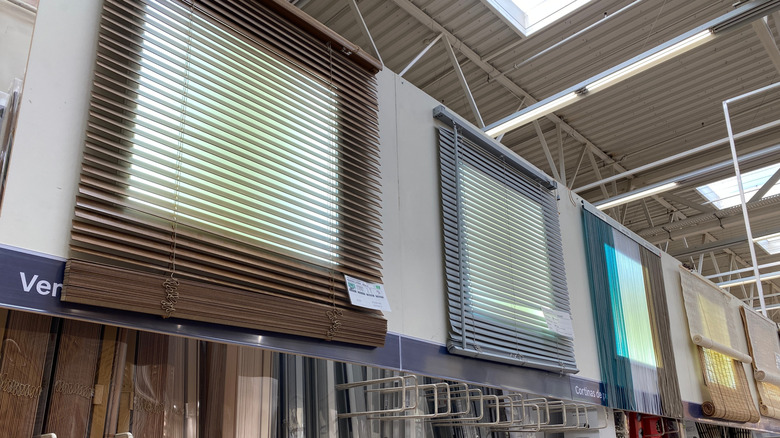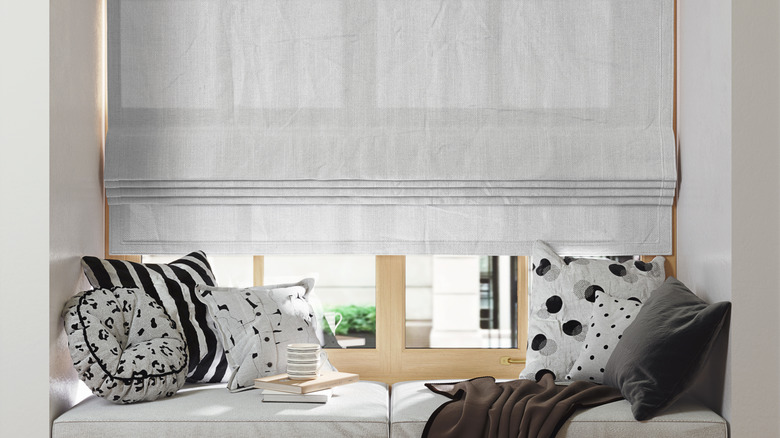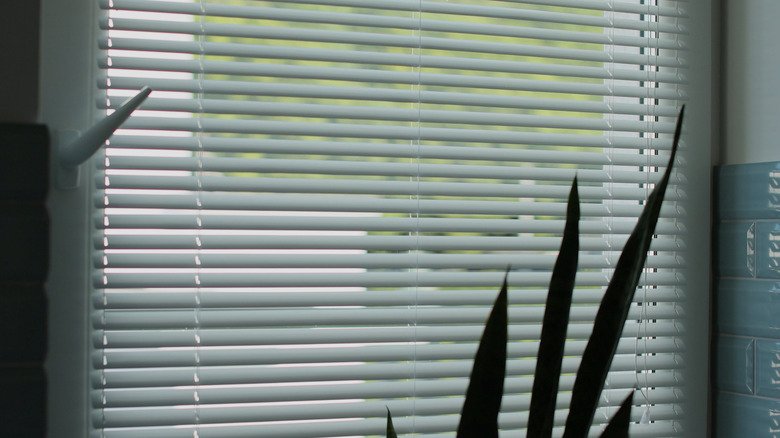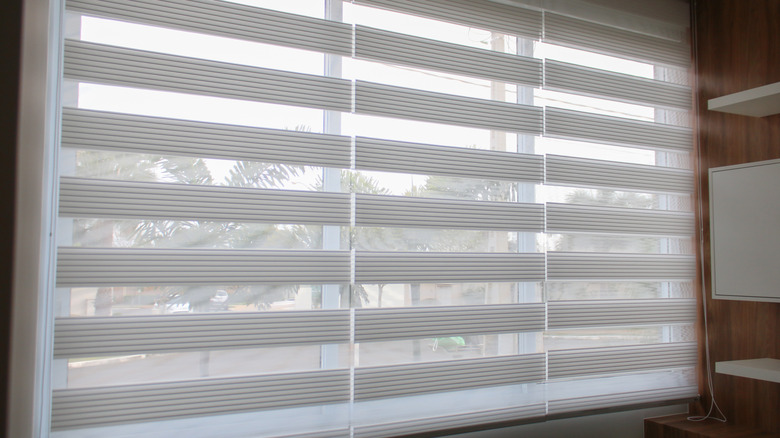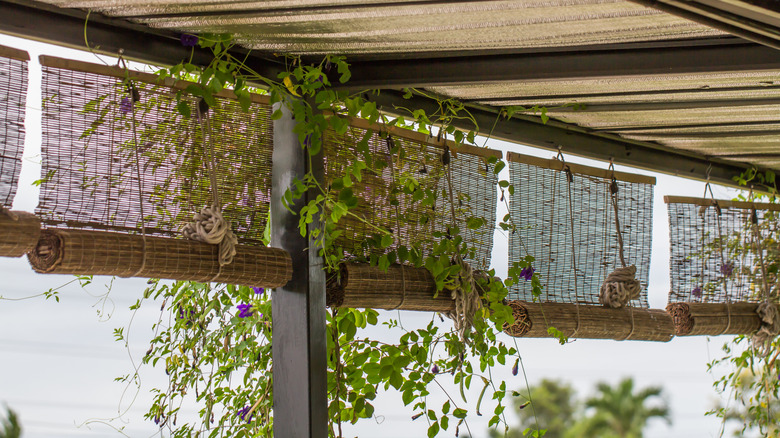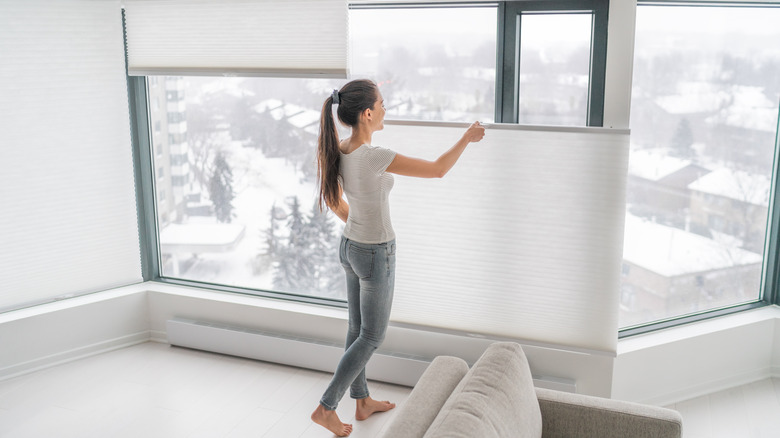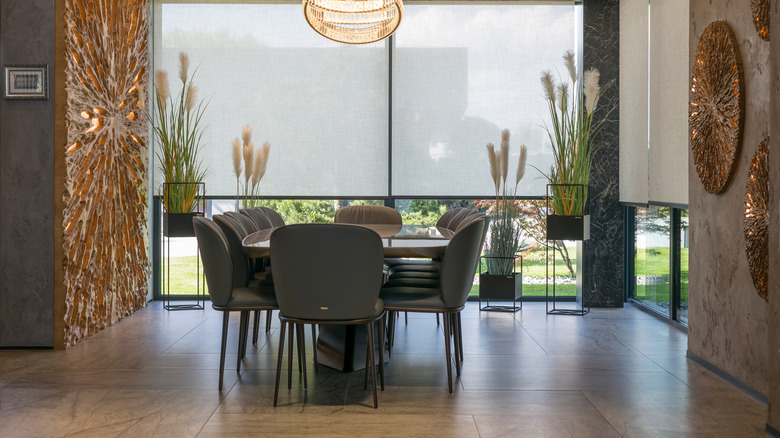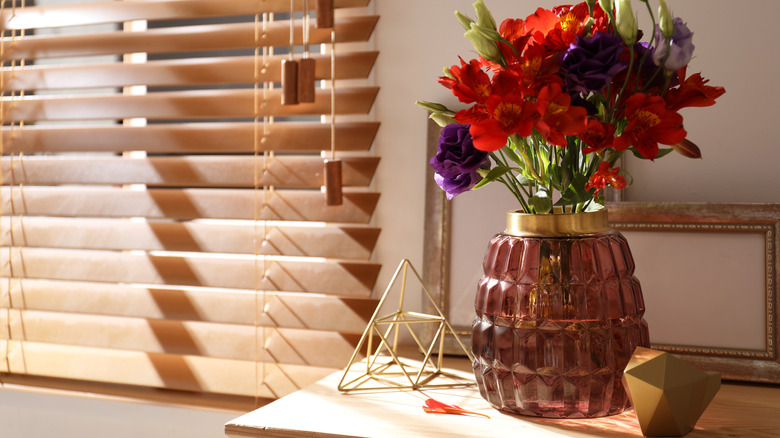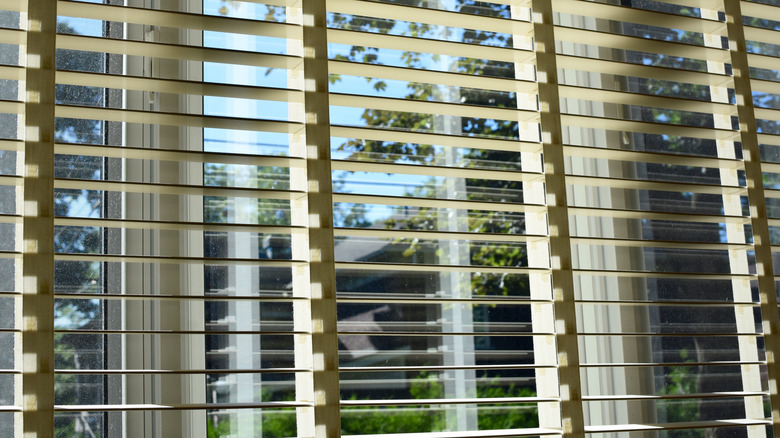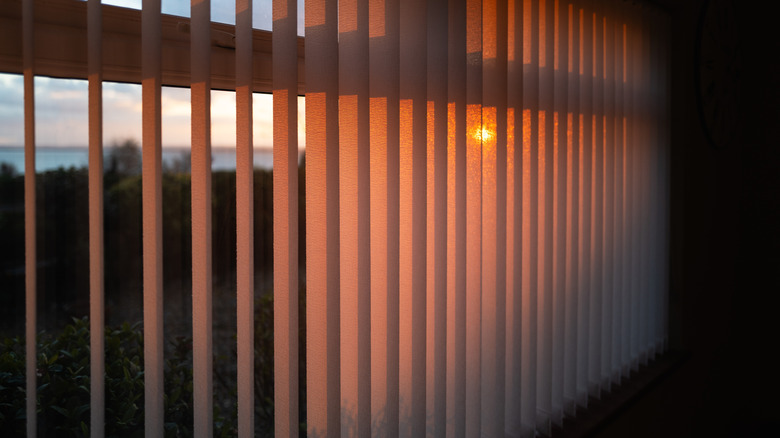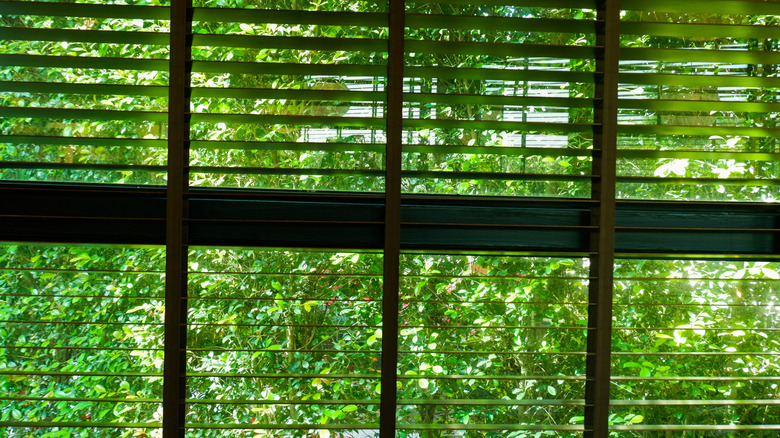10 Types Of Blinds & The Cleaners You Should Be Using On Them
Blinds are practical and stylish, letting you control the light coming in from outside and add privacy to your home. Plus, they can instantly elevate the look of a room. Blinds have come a long way over the years since the days of just being horizontal metal blinds. Now you have a choice of many different styles like the unique top down, bottom up window blinds that are an easy home upgrade that gives you more control over privacy and light. Blinds come in many different colors, too, so it's easy to choose the perfect blind color to complement your home. As lovely as blinds can be, they can be a little tricky to keep clean. Fingerprints, dust, and even grease can build up, especially if you have blinds in your kitchen. The key to keeping your blinds looking their best is cleaning them properly and with the right cleaner for the type of blinds you have in your home.
Each type of window blind has its own cleaning requirements and largely depends on the material they are made from. Some cleaners can damage your blinds so knowing what to use to clean them is very important. Even if you purchase budget-friendly blinds that look high end, you want to take care of them and clean them correctly so they will last. Some, such as metal blinds, require soapy water, while others, like woven blinds, need a duster and microfiber cloth. Don't let the fear of cleaning your blinds keep you from choosing this versatile and convenient way to cover your windows. Once you know how to clean your blinds and what to use to clean them, you will find the process is very simple.
Roman blinds
Roman blinds, or Roman shades as they are also called, are fabric blinds that fold up evenly and smoothly when raised. They are not like the traditional blinds that have slats. Roman blinds should be vacuumed or dusted once a week and deep cleaned once a month if there are any stains or spills present. Use a microfiber cloth or a feather duster to dust your Roman blinds. For deep cleaning, use very mild dish soap and warm water, and a soft cloth to blot the stain. Let the blinds air dry before raising them.
Metal blinds
Metal blinds are typically made of aluminum. They are a lot stronger and longer-lasting than other blind styles, and are easy to clean. If they are taken care of, you can expect your metal blinds to last for years. They are great for kids' playrooms, garage windows, and other areas where there might be heavy use. To clean them, use a microfiber cloth to remove dust. For deep cleaning or to remove grease, take the blinds down and let them soak in warm, soapy water in the tub for an hour. Rinse thoroughly and allow to dry completely before reinstalling them.
Zebra blinds
Zebra shades are a unique style of window blind made with solid and sheer bands of fabric that offer some privacy while still letting in light. Layered zebra shades are available in a variety of colors and opacities that will match your room's décor perfectly, giving you plenty of versatility. Dust your zebra shades 2 to 3 weeks with a microfiber cloth or feather duster, working in a downward motion. Make sure the shades are closed while you are cleaning them. For spot cleaning, use mild dish soap and warm water.
Woven blinds
Woven blinds are also known as bamboo blinds, or woven shades. They are made from natural fibers that create a unique woven mat-style blind, which is raised and lowered by pulling a string that rolls it up around a roller, or folds it into pleats. To clean, dust your woven blinds with a feather duster or microfiber cloth weekly. Do not use water or detergents on your woven blinds because it could damage them. If they are bamboo or other wood, you can spray some furniture polish on a rag and wipe the blinds down.
Top down bottom up
Top down bottom up shades are very unique and allow you to choose between lowering the blinds from the top or raising them from the bottom. This style of blinds works great for street level living. Top down bottom up blinds are often cellular or Roman style blinds. Dust these blinds with your microfiber cloth using a side-to-side motion. Use compressed air to clean out the inside of the cells. For spot cleaning, use mild dish liquid, diluted, on your rag and dab the stain until it is removed.
Solar shades
Solar blinds block UV rays from the sun that come in through the windows. These unique shades provide protection from the harmful UV rays while still allowing light to come through. Solar shades have a transparency percentage that tells you the amount of transparency the blinds have, and how much of the UV rays are blocked. Lower the shades and vacuum with a brush attachment to remove dust. Next, use a soft cloth and mild dish soap in warm water and wipe the solar shades thoroughly. Let them dry completely.
Wood blinds
Wood blinds are typically made of hardwood like basswood. They are durable, look wonderful, and add a rustic appeal to your home. Slat size in wood blinds varies from 1 inch slats to wide 2.5 inch slats that work well for large windows. To clean, lower the blinds completely and dust with a microfiber cloth. For deep cleaning, use a lightly dampened cloth, and clean each slat until the stains are gone. Dry the blinds thoroughly. Use wood polish on your wood blinds to reduce the amount of dust and dirt that settles on the slats.
Faux wood blinds
Faux wood blinds are a great budget option if you like the look of wood blinds but not the cost. Faux wood blinds are made from vinyl, foam wood, PVC, or composite, and come in a variety of finishes to match your decor. To clean, dust your faux wood blinds at least once per week. For stains, use mild dish soap and warm water and rinse well with a rag. For stubborn stains, use vinegar and water and spray the stains lightly. Let the vinegar and water sit for a few minutes and then wipe off.
Vertical blinds
Vertical blinds are often used to cover sliding glass doors. These blinds feature slats that are vertical instead of horizontal, hence the name. To clean, remove rigid slats from the clips to avoid breaking the clips while cleaning. Wipe each slat down with a soft cloth. Clean the slats with warm, soapy water and a rag or soak them in a tub for stubborn stains. For fabric vertical blinds, vacuum each fabric slat carefully and use warm soapy water and a rag to dab stains. Never rub the fabric slats.
Venetian blinds
Venetian blinds have been around since the late 1700s. These have horizontal slats that are 2 inches wide and can be moved individually. Venetian blinds are usually made of plastic, aluminum, or wood, although in the U.S. wood slat blinds are called wood blinds and not Venetian blinds. To clean, dust each slat with a feather duster or cloth once a week. For deeper cleaning, use warm water and soft cloths to remove any heavy dirt and dust. You can use vinegar and water or warm soapy water to deep clean the plastic and aluminum Venetian blinds.
